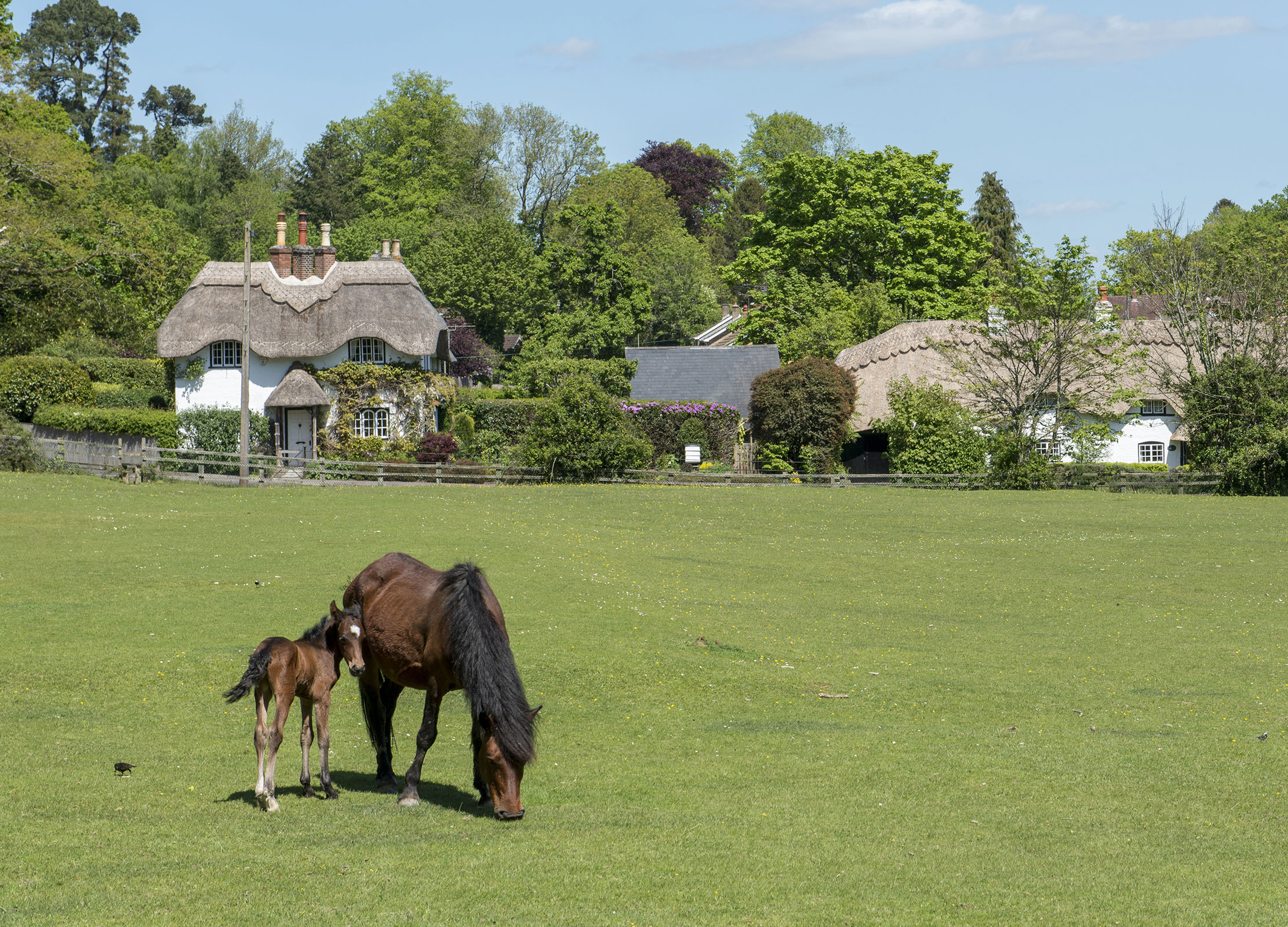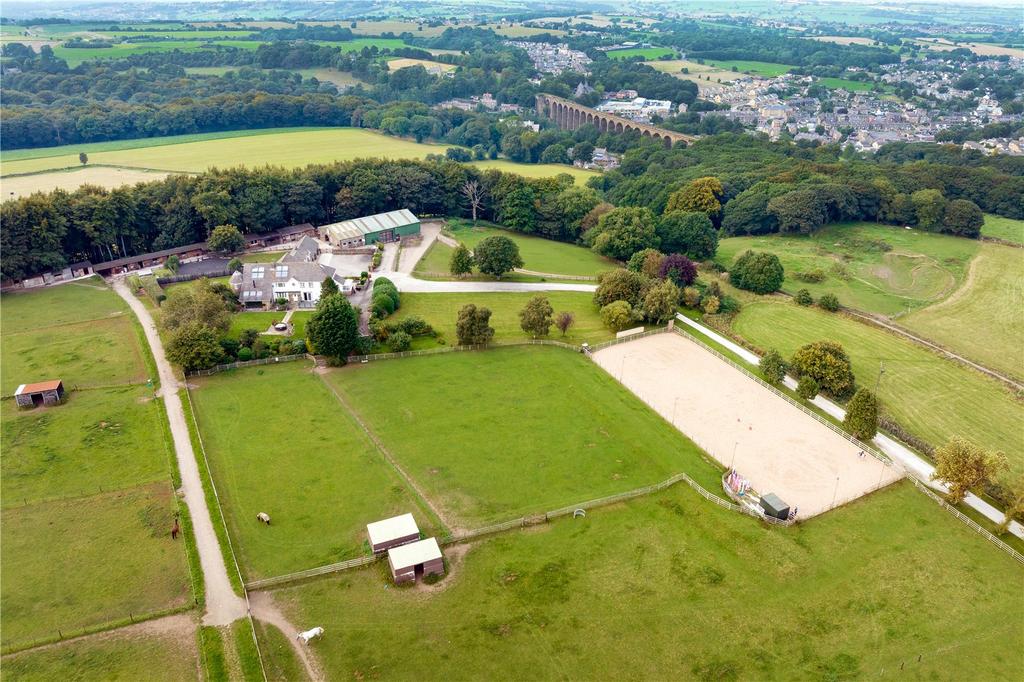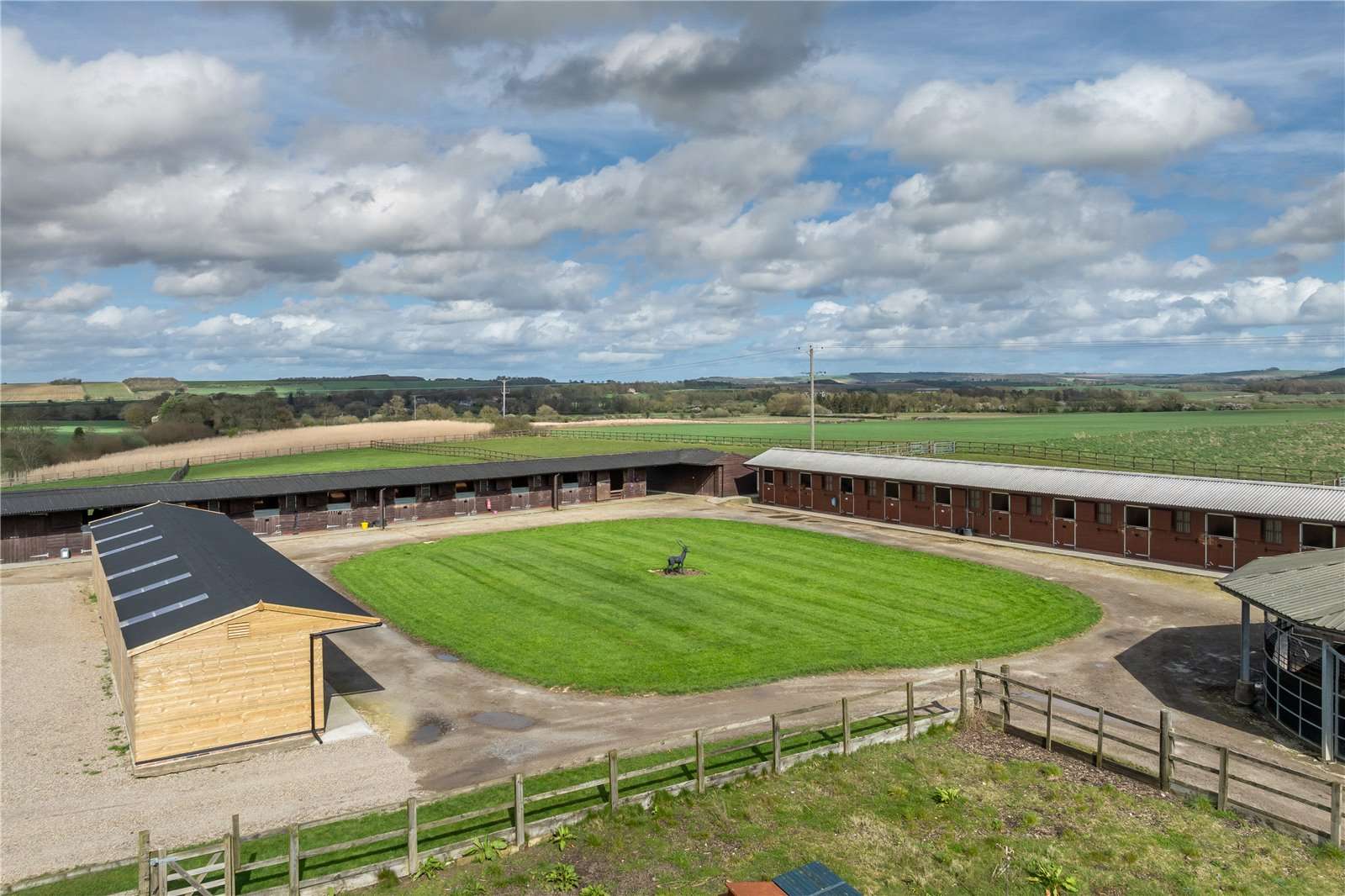What you need to know about buying an equestrian property
Owning a house with land where you can keep and ride your own horses is the dream for equestrians everywhere — but there are a number of things you need to know before you take the plunge. Annabel Dixon spoke to experts in the field to share their advice.


With the Badminton Horse Trials in full flow, it’s natural for those who love riding to start dreaming about owning a house where they can keep, train and ride their own horses.
But buying an equestrian home isn’t the same as buying an ordinary country house: it’s important to do your homework first. Equestrian properties vary widely, with the right one depending on the type of rider you are.
What's the market like for equestrian property?
Equestrian properties aren’t tied to the typical market movements in the way most homes are. ‘They almost act and transact on their own terms’, says Annabel Blackett of the National Country House Department at Strutt & Parker.
‘This is largely because they’re such a specific property type and have a niche market,’ she explains. ‘It’s also because riders often prioritise their horses when it comes to their financial outgoings, so the popularity of equestrian homes doesn’t necessarily decline even if the rest of the market sees a dip.’

That said, the equestrian world is not completely immune to wider forces. In harder times, buyers often look for a property where the buildings are smaller while still offering the outdoor space they want. Rose Grant, Rural Negotiator at Fox Grant, says the firm has spotted a ‘big increase in buyers wanting smaller houses and land, perhaps due to the cost of living and running a larger house’.
Fenn Wright report similar recent activity, having seen increased demand for properties of all sizes with land, particularly from buyers with a passion for horses.
Jonathan Perry from Fenn Wright’s Colchester office, explains: ‘During Covid, we saw demand outstrip supply with many people looking to relocate to the countryside and invest in lifestyle properties.’
Exquisite houses, the beauty of Nature, and how to get the most from your life, straight to your inbox.
What to think about when buying equestrian property
1. Location that fits you and your horse
Look for a spot close to bridlepaths for off-road hacking. And check that the property is near vital equestrian facilities, such as vets and farriers.
Annabel Blackett says that buyers looking at commercial viability will take into account whether there’s local shows and events ‘which is why you find more equestrian homes in the likes of Gloucester, Yorkshire and Sussex’.
Rosie Rickett of the Country House Department at Savills adds: ‘The rider’s discipline will largely dictate where and what they want to buy. For example, an eventer might look for a base with undulating hacking and canter tracks nearby for fitness, whereas an indoor area is a great plus for a dressage rider.’
2. Access for vehicles
Ensure there’s enough space at the property to manoeuvre bulky vehicles, such as horse boxes and trailers. Look for good access to a major road network too. If you’re transporting horses to events, proximity to dual carriageways and motorways is key.
3. Storage for equipment, vehicles and more
Yes, storage — you’ll need lots of it. If you’re a hobby rider, this could be one or two outbuildings for storing hay and tack. If you’re a professional rider, then you’ll be after more extensive storage to keep hold of feed, horse trailers and equipment.
Equestrian property with outbuildings can be versatile, Rickett points out. ‘It’s great to have barns for wash boxes and storing equipment and feed, along with stabling for the horses,’ she says. ‘If you sell your property in future to someone who doesn’t wish to utilise the facilities, there is always scope for them to convert buildings.’
4. The right amount of the right type of land
Consider the amount of land you’ll require. The British Horse Society (BHS) suggests between one and one and a half acres of permanent grazing for each horse as a guide. Land should be well-fenced, with trees or shelters that can protect your horses from the elements, and a good supply of fresh, clean water.
Whatever your riding style and level, the quality of the land is ‘a non-negotiable’, says Blackett.
‘The preference is for light loams and chalk-based soils, and to avoid heavy clay as this can clump in winter and go hard in summer. Meanwhile sandy soil can cause colic if the horses eat too much of it,’ she explains.
‘Equally, you’re looking for well-established grass for grazing, which is free-draining to reduce the risk of injury and for easier maintenance during the wetter months.’
5. Ready-made facilities
Think about the facilities you’ll need. Bear in mind that if you want to build new facilities, or convert existing buildings, you’re likely to require planning permission.
According to Louisa Batterbury, a Director in Savills’ Rural Agency, a lifestyle buyer is likely to be more drawn to the house and could be happy with a few stables and paddocks. She says: ‘An all-weather arena would be a bonus but possibly not a ‘must have’ depending on the level of their interest.’
But a professional equestrian buyer may put less emphasis on the residential element of the property and much more on the specialist facilities.
Batterbury continues: ‘For example a dressage rider, show jumper or eventer is likely to want outdoor and indoor arenas, top-spec stables, potentially accommodation for staff. Polo players will look for flat, freely draining land suitable for a stick-and-ball field.’

What’s on the equestrian buyer's wish list?
It’s no surprise that in the UK, all-weather equestrian facilities are highly sought-after.
‘We’re now in the second consecutive year of major equestrian events being cancelled due to poor weather conditions,’ says Joanna Cocking, Head of Private Office and Prime at Hamptons. ‘As a result, the need to have the facilities that can protect from the elements is becoming more necessary.’
An indoor, Olympic-sized arena is on the wish list, according to Rupert Sweeting, Head of National Country Sales at Knight Frank.
‘In addition, American barn stabling for ease of stable management, feeding, mucking out and less likelihood of horses getting sick,’ he says. ‘Finally, a gallop — preferably a deep sand oval and an uphill gallop of a mile or more ideally.’
An equestrian property that’s in good condition should not be overlooked, especially at a time when the cost of materials and labour has climbed. Perry says that ‘with the cost of timber having risen significantly since 2020, even erecting or repairing post and rail fencing can be an added or unexpected expense’.
He adds: ‘A real bonus for equestrian buyers is the ability to generate income, whether from a livery or holiday accommodation. If there is a second dwelling or outbuilding that can be converted for Airbnb use, this offers the opportunity for equestrian escapes.’
But beauty is in the eye of the beholder. ‘At one end of the spectrum, some buyers prioritise privacy and convenience, preferring facilities close to the dwelling for easy access. I had one buyer that insisted they found a property where they could step out in a dressing gown,’ says Jonathan Handford from Fine & Country Leamington Spa.
‘On the other hand, there are buyers more inclined towards competitive riding, emphasising the fitness, health, and well-being of their horses. For these dedicated riders, state-of-the-art amenities such as solariums, walkers, and lunge pens are paramount.’
What are the pitfalls when buying equestrian property?
Sarah Jordan, a rural law expert at Moore Barlow, reveals what to be wary of when buying equestrian property.
1. Covenants
Ensure you can use the land for equestrian activities. There's a strict legal difference between equestrian use and agricultural use. Just because land is used for agricultural purposes does not always mean it can then be used for equestrian activities.
2. Boundaries
Check that the boundaries of the land are accurate. Often, corners of fields are left out from the original registration at the Land Registry. Any discrepancies need to be resolved so you can access all the land.
3. Water supply
Find out if there is a suitable water supply. Land doesn’t often have a mains supply connection, so you may need to consider obtaining one. There are private water options, including putting in a borehole — thought it’s not always an easy feat.

4. Rights of way
If there's a right of way in place, make sure it doesn’t disrupt your equestrian operation. You should also investigate whether rights of way in the neighbourhood are bridleways to accommodate horse riding.
5. Access
Look for access to fields and rural properties. It's very common to cross a piece of verge or have a section of track that isn't included in the title deeds.
6. Planning policies
Check that there are no planning restrictions in place. Some property is subject to planning uplifts or change of use payments called overage. This could be triggered by the granting of planning permission.
7. Existing occupiers
Look at who's in occupation on the land. You don't want to buy your property to discover the farmer you thought had an informal arrangement to graze their cattle actually has a business tenancy and will be difficult to remove from the land.

Credit: Strutt and Parker
Best country houses for sale this week
An irresistible West Country cottage and a magnificent Cumbrian country house make our pick of the finest country houses for

